We’re here to tell you what a cold shoe is, and why you need to have a cold shoe in your camera bag. [ExpertPhotography is supported by readers. Product links on ExpertPhotography are referral links. If you use one of these and buy something, we make a little bit of money. Need more info? See how it all works here.]
Hot Shoe vs Cold Shoe
To avoid any confusion, we need to figure out the differences between a hot shoe and a cold shoe. A hot shoe is composed of metal brackets you see on top of your camera. It’s the one you use to attach an external flashgun. It is called “hot” because it has electrical contacts that let it send signals from the camera to your flash. Meanwhile, a cold shoe is a receptacle that in many ways, looks exactly like a hot shoe. But the difference is that it often doesn’t have any electrical contacts to trigger a flashgun. Hence the term “cold.” There are many types of cold shoes with different uses. We’ll check out some of the popular options and how you can use them.
Cold Shoe Mount for Off-Camera Flash
One of the most common uses for a cold shoe is for mounting flash guns on tripods or light stands. There are plenty of cold shoe variations to choose from for flash photography. The most basic ones have brackets on top and a thread mount at the bottom. All you have to do is to screw them on to a stand, install the flash like you would on a regular hot shoe and you’re good to go. They’re basic and compact, but they work well in keeping your flashgun in place. There are also cold shoe mounts with adjustable arms. They don’t just hold your flashgun, but they also let you point your light in any direction. Most of these cold shoe attachments also include slots where you can install a shooting umbrella with ease. Now you may be asking, if a cold shoe doesn’t have an electrical contact, how can you then operate the flash remotely? In this scenario, a cold shoe works merely as an adaptor to hold the flashgun. The triggering part happens through the use of a wireless trigger. This receives a command from the camera either optically or through radio signals.
Cold Shoe with Electrical Contacts
We know that the difference between a cold shoe and a hot shoe is that a hot shoe can produce electrical signals to trigger your flashgun. But did you know there are also cold shoes that can connect electrically to a camera’s hot shoe? Despite having internal wiring, they’re still called cold shoes because they can’t trigger the flash by themselves, unlike a regular hot shoe. So you can think of them more as a receptacle of an extension cord that allows you to send electricity to your device using a cable. You need to be aware that cold shoes with electrical connections are uncommon these days. The reason is that you can now connect your camera directly to your flash using a PC-sync cable. There are still cases when you may need this type of cold shoe for connecting two or more flash units physically from a single hot shoe. The most common designs that have cold shoes with electrical contacts are the L-shape and double arm hot-shoe extensions. we’ll discuss these in the next section.
Cold Shoe Extension
A cold shoe extension is called such because it has brackets made of metal or plastic that extends from the hot shoe to the side of the camera. Some, but not all, have internal connections that allow your camera’s hot shoe to send signals directly to the flash without a sync cable. So why the strange design? We all know that a direct camera flash creates unflattering results. The purpose of a cold shoe extension is to provide an “off-camera” flash while attached to the camera. The brackets extend to the left or the right side of your camera so you’re not firing off light in front of your subject. These hot-shoe extensions are especially useful in event and news photography. They provide flattering looks without having to bring a separate light stand for off-camera flash. Like all the cold shoe variations we discussed in this article, cold shoe extensions also have different designs. Of course, there’s the basic L-shape design. But some options also have adjustable arms. And then there are even double mounts that allow you to attach two flashes on top of your camera.
Cold Shoe Adapter for Microphones and Other Accessories
DSLRs and mirrorless cameras began including video recording features. Since then, the hot shoe became a perfect place to mount all sorts of video and audio accessories. The most common devices that people attach to their cameras using cold shoe adapters include microphones, video monitors, and LED lights. And of course, there are also ones designed for GoPros. They’re often used to let you record video via GoPro while you’re taking pictures with your main camera.
So How Do You Use a Cold Shoe?
Due to the variations in design when it comes to cold shoes, the way to install them also varies. But no matter what type of cold shoe you have, installing it is generally easy and straightforward. Remember that since the size of the brackets is universal, they’ll fit on any camera with a standard hot shoe. The simplest versions have brackets you can slide into the hot shoe, or a thread mount you can screw onto a tripod. That’s it. But the more complex designs either have screws or knobs that you can loosen or tighten. These types of cold shoes are often safer because they ensure your equipment won’t slip off.
Conclusion
With all sorts of cold shoes available out there, it helps to know what type you need. Do your research and figure out what you want to use. You should also make sure if it’s compatible with your camera system. As you build your equipment, you’ll find that it helps to have several types of cold shoes in your camera bag. There’s no doubt you’ll need one for one reason or another!


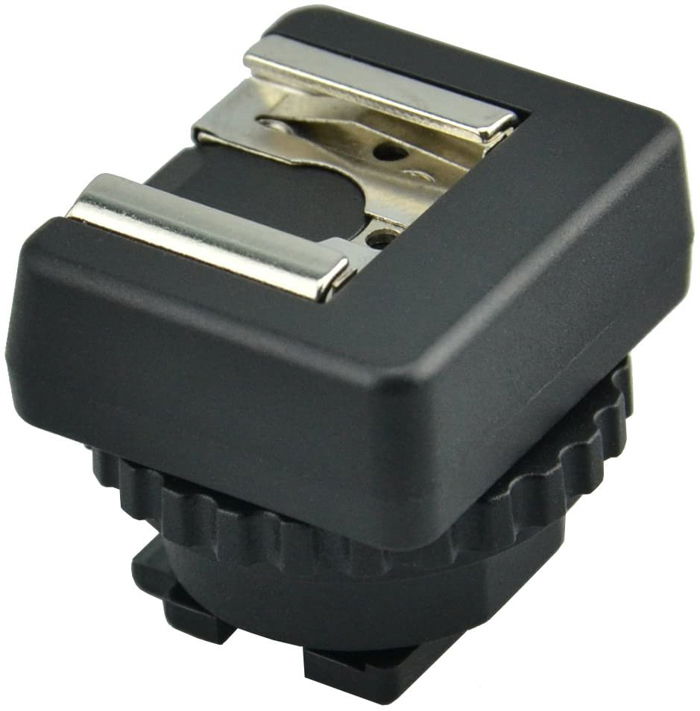
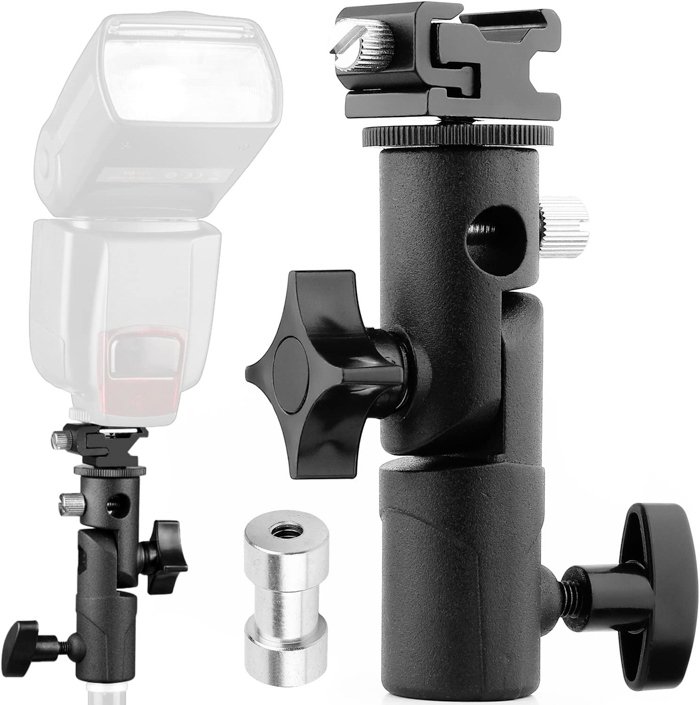
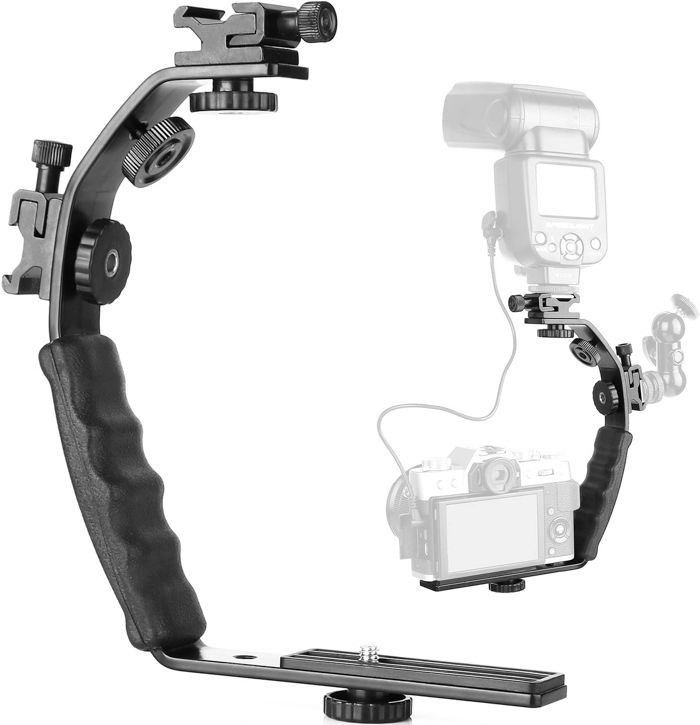
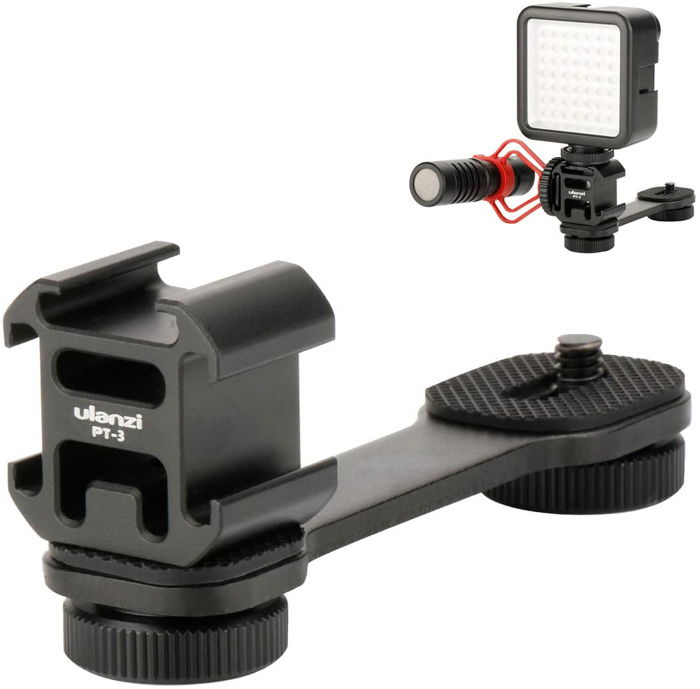
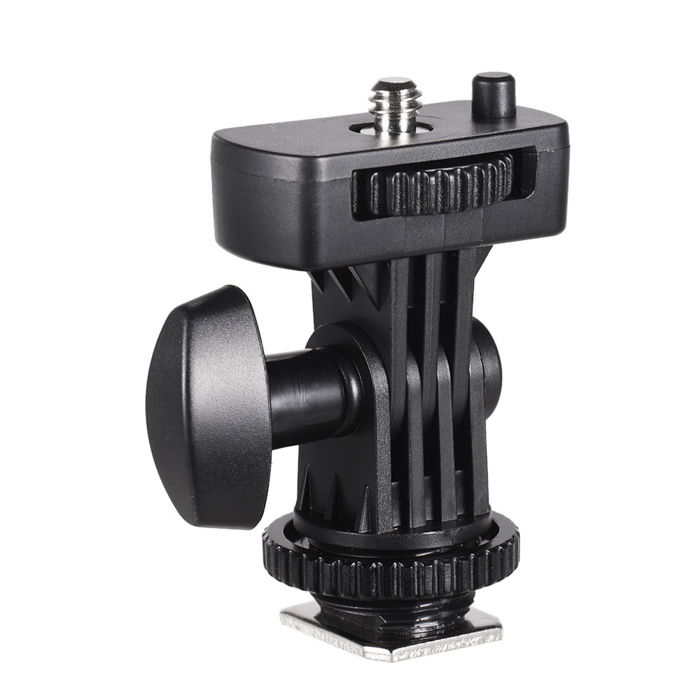


title: “What Is The Cold Shoe And How Can You Use It " ShowToc: true date: “2023-01-07” author: “Elizabeth Merritt”
We’re here to tell you what a cold shoe is, and why you need to have a cold shoe in your camera bag. [ExpertPhotography is supported by readers. Product links on ExpertPhotography are referral links. If you use one of these and buy something, we make a little bit of money. Need more info? See how it all works here.]
Hot Shoe vs Cold Shoe
To avoid any confusion, we need to figure out the differences between a hot shoe and a cold shoe. A hot shoe is composed of metal brackets you see on top of your camera. It’s the one you use to attach an external flashgun. It is called “hot” because it has electrical contacts that let it send signals from the camera to your flash. Meanwhile, a cold shoe is a receptacle that in many ways, looks exactly like a hot shoe. But the difference is that it often doesn’t have any electrical contacts to trigger a flashgun. Hence the term “cold.” There are many types of cold shoes with different uses. We’ll check out some of the popular options and how you can use them.
Cold Shoe Mount for Off-Camera Flash
One of the most common uses for a cold shoe is for mounting flash guns on tripods or light stands. There are plenty of cold shoe variations to choose from for flash photography. The most basic ones have brackets on top and a thread mount at the bottom. All you have to do is to screw them on to a stand, install the flash like you would on a regular hot shoe and you’re good to go. They’re basic and compact, but they work well in keeping your flashgun in place. There are also cold shoe mounts with adjustable arms. They don’t just hold your flashgun, but they also let you point your light in any direction. Most of these cold shoe attachments also include slots where you can install a shooting umbrella with ease. Now you may be asking, if a cold shoe doesn’t have an electrical contact, how can you then operate the flash remotely? In this scenario, a cold shoe works merely as an adaptor to hold the flashgun. The triggering part happens through the use of a wireless trigger. This receives a command from the camera either optically or through radio signals.
Cold Shoe with Electrical Contacts
We know that the difference between a cold shoe and a hot shoe is that a hot shoe can produce electrical signals to trigger your flashgun. But did you know there are also cold shoes that can connect electrically to a camera’s hot shoe? Despite having internal wiring, they’re still called cold shoes because they can’t trigger the flash by themselves, unlike a regular hot shoe. So you can think of them more as a receptacle of an extension cord that allows you to send electricity to your device using a cable. You need to be aware that cold shoes with electrical connections are uncommon these days. The reason is that you can now connect your camera directly to your flash using a PC-sync cable. There are still cases when you may need this type of cold shoe for connecting two or more flash units physically from a single hot shoe. The most common designs that have cold shoes with electrical contacts are the L-shape and double arm hot-shoe extensions. we’ll discuss these in the next section.
Cold Shoe Extension
A cold shoe extension is called such because it has brackets made of metal or plastic that extends from the hot shoe to the side of the camera. Some, but not all, have internal connections that allow your camera’s hot shoe to send signals directly to the flash without a sync cable. So why the strange design? We all know that a direct camera flash creates unflattering results. The purpose of a cold shoe extension is to provide an “off-camera” flash while attached to the camera. The brackets extend to the left or the right side of your camera so you’re not firing off light in front of your subject. These hot-shoe extensions are especially useful in event and news photography. They provide flattering looks without having to bring a separate light stand for off-camera flash. Like all the cold shoe variations we discussed in this article, cold shoe extensions also have different designs. Of course, there’s the basic L-shape design. But some options also have adjustable arms. And then there are even double mounts that allow you to attach two flashes on top of your camera.
Cold Shoe Adapter for Microphones and Other Accessories
DSLRs and mirrorless cameras began including video recording features. Since then, the hot shoe became a perfect place to mount all sorts of video and audio accessories. The most common devices that people attach to their cameras using cold shoe adapters include microphones, video monitors, and LED lights. And of course, there are also ones designed for GoPros. They’re often used to let you record video via GoPro while you’re taking pictures with your main camera.
So How Do You Use a Cold Shoe?
Due to the variations in design when it comes to cold shoes, the way to install them also varies. But no matter what type of cold shoe you have, installing it is generally easy and straightforward. Remember that since the size of the brackets is universal, they’ll fit on any camera with a standard hot shoe. The simplest versions have brackets you can slide into the hot shoe, or a thread mount you can screw onto a tripod. That’s it. But the more complex designs either have screws or knobs that you can loosen or tighten. These types of cold shoes are often safer because they ensure your equipment won’t slip off.
Conclusion
With all sorts of cold shoes available out there, it helps to know what type you need. Do your research and figure out what you want to use. You should also make sure if it’s compatible with your camera system. As you build your equipment, you’ll find that it helps to have several types of cold shoes in your camera bag. There’s no doubt you’ll need one for one reason or another!








